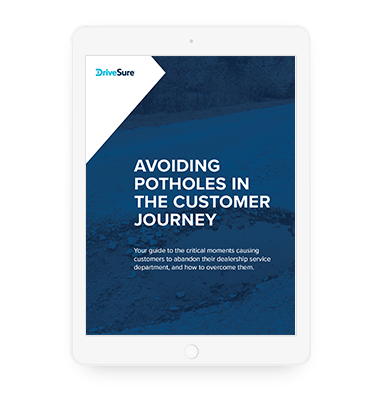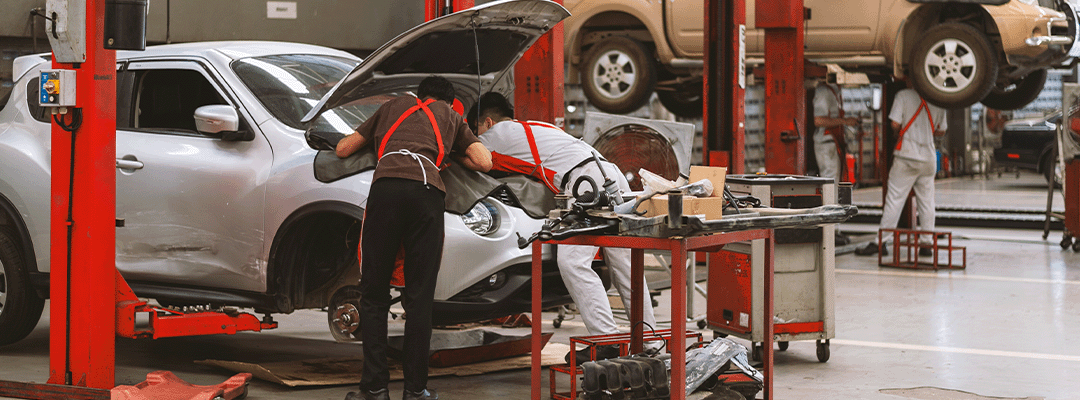With service centers being such a huge source of revenue at dealerships, a backlog of vehicles means money down the drain. The obvious move for a busy dealership? Expand your service lane capacity. Unfortunately, not everyone has the time or resources for new construction, so you’ll want to get the low-hanging fruit before you consider any larger investments.
There are plenty of simpler ways to boost the capacity of your service lane, and they don’t require much time or money to implement. The central idea here is efficiency: if you often have more vehicles you can handle, you probably also have times where business slows down and your technicians are underutilized.
To tackle this, you need to shift the workload around. This helps you get more done in slower times, so you have less backlog when things get busy.
If you’d like to push out a steady stream of vehicles, without cars waiting around on the lot, keep reading. Here are 9 ways to quickly expand your service lane capacity.
Prepare for the 5 make-or-break moments that can cause service customers to start going elsewhere.
1. Schedule more service appointments online or over the phone
Even with online booking available, plenty of customers don’t think to book service online. But by encouraging them to book in advance, you can anticipate which days and hours you’ll be busiest and take steps to prepare.
If your dealership offers DriveSure, we’ve just made this process even simpler for customers by adding a QR code to windshield reminder stickers that customers can use to schedule service with you online or even request a tow to your dealership with our roadside assistance benefit.
Online bookings also help reduce how many customers simply show up unannounced. When customers arrive without a prior booking, they might be requesting service during your busiest hours, which means you’re not only wasting valuable time, but you’re also more likely to have unhappy customers waiting around.
By knowing in advance when you’ll be busiest, you can make adjustments like bringing on extra help. This brings us to the next point:
2. Hire additional technicians
This may be an obvious solution, but it’s still worth a mention. If you have space for more technicians, having more of them working is a straightforward way to increase the number of vehicles serviced per day.
Even if they’re not hired full-time, having a few extra hands on deck during peak hours can help you get more vehicles serviced in a timely manner. Again, this becomes much easier when you know how busy you will be on a given day.
We know hiring great technicians is difficult these days, but there are a few technician hiring strategies that still work well. Tactics like partnering with local schools and tapping into your existing staff’s network can help you find talent even in this difficult hiring market.
3. Ask customers to drop off their car before their service appointment.
This accomplishes a few things at once. Firstly, it lowers the odds that you will have customers arriving late for appointments, which might result in your service lane operating under capacity. Since it prevents the job from starting late, it also avoids further delays throughout the day.
Additionally, having a vehicle dropped off prior to the service appointment allows the technicians to start working on the car as soon as the appointment is scheduled, so less time is wasted in between jobs.
On the topic of not wasting time…
4. Improve the efficiency of the check-in process.
It might seem small, but wasted minutes add up when your check-in process is slow or inefficient. Your goal here is to get the customer in and out as quickly as possible without making them feel rushed or unimportant.
- Make sure all required information is collected upfront so that the service can be completed without delays. The online scheduling we mentioned earlier can be great for this.
- Designate a specific area for drop-offs and pickups, so less time is spent moving vehicles around.
- Improve your vehicle pickup and repair order closeout process, such as by standardizing billing or expanding accepted payment options, so your team can finish strong in the “last mile” of service
5. Offer transportation options such as pickup & delivery, or rideshare

If a vehicle owner arrives for service when you’re already booked up, they might wait around for hours before getting their vehicle back. But what if you could wait until a slower part of the day to service it? You could have more control over your schedule without upsetting the customer.
If you provide your customers with a means of transportation, they won’t need to wait around at the dealership. This means technicians can work on the vehicle at the most convenient times of day. You may already have a shuttle service, but you can take it a step further.
Consider offering pickup and delivery, or even offer rideshare as an amenity to set yourself apart. Rideshares like Uber and Lyft are a fast and convenient way to get customers where they need to be, without waiting around for a (possibly crowded) shuttle. This also means no maintenance on your end, which in turn means lower costs and more time saved compared to a shuttle.
6. Offer customers extra value to help fill non-peak timeslots
Odds are, some hours of the day are consistently much busier than others. You may also have certain days of the week where you don’t expect much business. These open spaces are golden opportunities to offload some of the work from your busier hours, so start looking for ways to move the schedule around.
More specifically, you should incentivize customers to schedule during predictably slow hours or days. This might be a small discount for booking an early bird appointment, or consider providing additional value like a free vacuuming.
7. Manage your team’s tasks based on their skill levels
Imagine you’ve got one car that requires a simple service like an oil change, while another needs a complex repair. Let’s say that Joe the service technician is highly qualified for the complex repair, while Dave could do it with enough time, but isn’t an expert.
If Joe and Dave both simply started on the first car they saw, the complex repair might take much longer than it should, while the oil change would hardly take any time at all.
This would not only keep a customer waiting longer than necessary, but it would lower the number of vehicles you can service in a given day.
Instead of this, you should avoid putting skilled service technicians on easier tasks, because less experienced workers might take much longer for a job that requires higher skill. Spend time getting to know your employees’ skill levels so you can assign each job to the person who can get it done fastest.
Similarly, consider having a dedicated team of technicians who can handle simple services, like oil changes or tire rotations. Check out our blog article on improving service department efficiency for more ways to maximize your team’s output.
8. Break larger services into smaller tasks that can be completed in parallel
Many tasks can be done simultaneously, so there’s no sense doing them one at a time. If a vehicle requires multiple services that don’t interfere with each other, like an oil change and a tire replacement, you can put multiple technicians on that vehicle at once.
Again, if you don’t have a big enough team for this, remember that hiring extra technicians for busy hours can increase the profitability and reputation of your service center.
9. Maximize your open hours and get more warning for no-shows
A missed appointment means lost revenue, but it also means you have an open space in your schedule that won’t always get filled.
Simple communication can help you reduce the number of no-shows. For example, if a customer has an appointment for 11:00am, send them a text message the day before asking them to confirm their appointment, and if they do not respond, send them another message at 8:00am offering them the option to reschedule.
At very least, this gives you a heads up that someone might miss their appointment, so you have more time to fill that timeslot.
Conclusion
You can take a lot of small steps to increase the number of vehicles coming out of your service lane, without having to expand the structure itself. When you manage your appointments more effectively, you can spread them out over the course of the day, so employees aren’t overloaded (or waiting around).
This might mean encouraging online booking, appointment reminders to avoid no-shows, improving your check-in process, or providing transportation to customers so you can service their vehicle on your own schedule.
You can also manage your workforce more effectively, such as by bringing on more employees during peak times, and by assigning harder tasks to your more experienced technicians.
Master These Moments to Keep Your Customers
Discover the 5 critical moments causing customers to abandon your dealership service department, and how you can overcome them.


